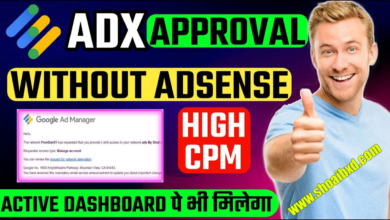

In today’s digital environment, content sets the standard. It is the blood of life. Power up your website and it will perform well in Google’s search engine results pages (SERPs). But content creation alone is not enough. To become succeed in the competitive world of Google SEO and you need to create high quality content that readers and search engines love and ranks. This guide and instructions will offers tips that can help you write content that Google loves, helping you cut through the noise and attract garbage like a magnet adn attract like a lover.
Understanding Google: E-A-T and Search Intent
Lets go guys before We Go Into brief Details We’ll explain how Google evaluates content and rank it. Google favours sites that highlight knowledge. reliable and trustworthy (E-A-T), meaning your content should include bellow properities:
- Expert: Written by people with extensive experience in the field.
- Reliability: Backed by reliable features and deep domain knowledge.
- More Reliability: valid and error-free. In addition to EAT, Google prioritizes information relevant to the search target.
- Status: the user’s main search question. They are looking for information. do you want to buy something Or is it just fun? Develop content with the goal of providing real value to your audience. The Power of Content Creation: A Step-by-Step Guide Now let’s focus on creating quality content:
1. Keyword Search: Open the search box.
Keywords are the foundation of search engine optimization. Key words a method by this method any user can search the content by typing it on search engines. Here’s how to find related keywords:
- Start with a main topic: Consider a main topic. relevant to your branch
- Use keyword research tools: Use free or paid tools like Google Keyword Planner or Ahrefs to find keywords with low search volume and competition.
- Prioritize keywords: Longer terms (niche phrases) have higher conversion rates because they target users with specific intent.
2. Create interesting headlines to attract readers.
Your story is your first impression, believe me!
Here are some suggestions:
- Clarity is key: Make sure your title effectively communicates the main message of your content.
- Observant and curious: Show interest in asking questions. harsh words or attention-grabbing actions
- Keyword management: You want to include keywords naturally. (but don’t add keywords)
3. Analysis Structure:
Guide readers through your content. People search for content on the Internet. But they don’t use it. Here’s how you can easily check your data:
- Subheadings and subtopics: Divide your content into sections. in depth and provide information on subtopics and subtopics to enhance the learning experience.
- Solution: You have to make sure your content has a logical story from start to finish that takes readers on an intelligent journey and can understand easily.
- *Adjustable Sentence Length: Combine short and long sentences for a better reading experience.
4. Content is informative, engaging and transformational.
This is the main point Let’s get to the heart of the content – the message itself.
Our goal is to provide:
- Deliver valueable content: meet specific customer needs or answer questions in a concise and informative manner and use it user friendly.
- Engage with students and entertain students: Incorporate elements such as storytelling, humor (if appropriate), or multimedia (images, videos) to keep students engaged and easy to understand.
- Call to action (CTA): Don’t let your readers suffer! Encourage them to take the next step. Whether to subscribe to the newsletter, go to another page or purchase products.
5. Internal Integration.
Creating Online Content Internal and external links are relevant content on your website to improve user experience, website ranking and site traffic. It also helps distribute link power (SEO value) to your website.
- Methodology: connections with content relevant to the writing process. Not just in front of you
- Use descriptive text: don’t just use “click here”.
6. Find great photos and videos.
Must add Images and videos can increase the usability of your content also user can understand content. But it also plays a role in SEO.
- Relevant and high quality: Use eye-catching images and videos to directly support your content.
- Page File Size: Reduce the file size of images and videos for faster loading. (Google Graphics)
- Descriptive filenames and alt text: Provide descriptive filenames and text that match your images and videos.




